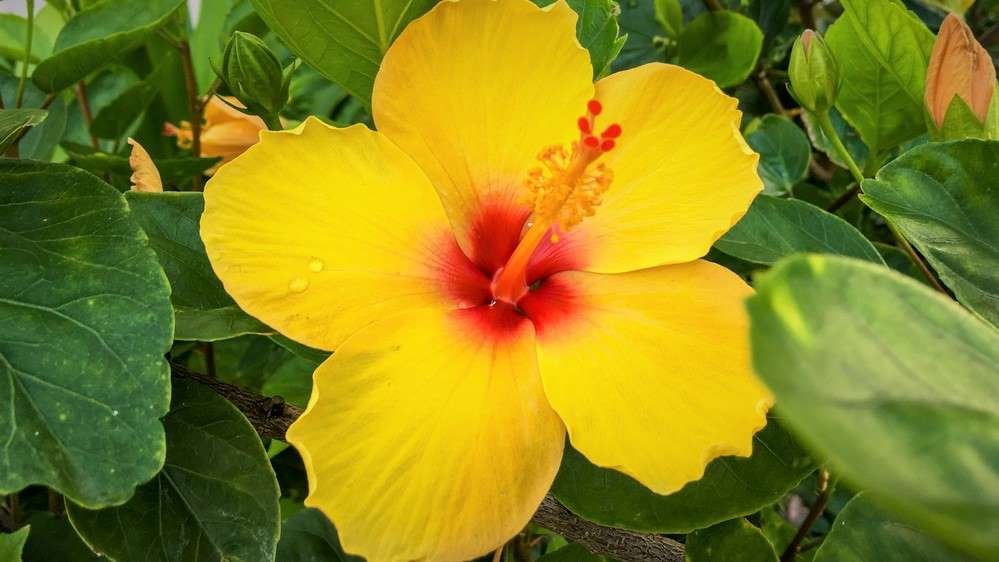Oahu Island Flower: Pua ilima (Sida fallax)
In 1988, the paper-thin Pua ‘ilima, or Sida fallax, a member of the Hibiscus family, was officially designated the flower of Oahu. Ancient Hawaiians used the golden flowers for medicinal and lei-making purposes, with up to 1,000 of the flowers required to make one lei. Also known as the “Gathering Island,” Oahu is a vibrant hub of activity that celebrates its official flower.
Quick Overview of Oahu’s Official Island Flower: Ilima (Sida fallax)
The scientific name for Ilima is Sida Fallax, also called Black Coral. This flower has its habitat in Hawaii’s coastal and dry-mesic forests, particularly in Kauai and Oahu. It has rounded green leaves with serrated margins, and some varieties have soft velvet-like hairs. The flowers are orange and around an inch in diameter. It can be used as a low hedge or specimen plant in full sun and requires less water to make the plant bushier. It has cultural uses, such as being used in leis and as a mild laxative for babies. Additionally, the flowers are used in salads but may come with a pesticide label (which you should read) (Source: Hawaiiannativeplants.com).
Ilima (Sida fallax)
Ilima (Sida fallax) is a unique flower in many ways. Its petals range from golden yellow to orange in color and measure 0.75–1 in (1.9–2.5 cm) in diameter. Its height can vary from 6 inches (150 mm) to 10 feet (3.0 m), growing either in a prostrate (beach growing) or erect (upland shrub) form. The leaves can be long, narrow, rounded, or heart-shaped, with finely to coarsely serrated leaf margins. The flowers may be solitary or occur in small clusters.
Ilima is traditionally used to make leis, with 1,000 blossoms needed to create one strand. People use it commercially to make flowers and garlands in Hawaii and Kiribati. In Nauru, people use stems for weaving rough baskets, floor coverings, and house thatching. The leaves and flowers are dried and used as fertilizer, mulch, and compost in Kiribati. Medicinally, it is used to ease pregnancy and as a mild laxative. In Kiribati, it has also been used in love magic.
In terms of symbolism, Ilima is the flower of the Oahu, Hawaii, and Abemama, Kiribati islands. It is also the symbol of Laloimehani and is associated with Laka, the goddess of the hula. The prostrate form is said to be associated with Pele’s brother, Kaneapua, the god of taro planters. Lei made from ilima are believed to attract mischievous spirits (Source: Wikipedia.org)
Sida Genus
The Ilima, scientifically known as Sida fallax, is one species in the broader genus of Sida, an intriguing genus of plants belonging to the Malvaceae family, found in tropical and subtropical parts of the world. These annual or perennial herbs or shrubs can reach up to two meters in height and have leaves with serrated edges and charming flowers with five sepals and petals in yellow, orange, or white.
These blooms give way to disc-shaped schizocarps, each with five to twelve sections containing one seed.
The genus name is derived from the Greek for “pomegranate” or “water lily,” which is befitting for the beauty of the species. There are approximately 150-250 accepted species, though some sources recognize as few as 98.
Additionally, many plants identified as Sida don’t have a scientific description. The sida plants attract butterflies and moths, with Arrowleaf Sida acting as a larval host for the tropical checkered skipper (Source: Wikipedia.org).

